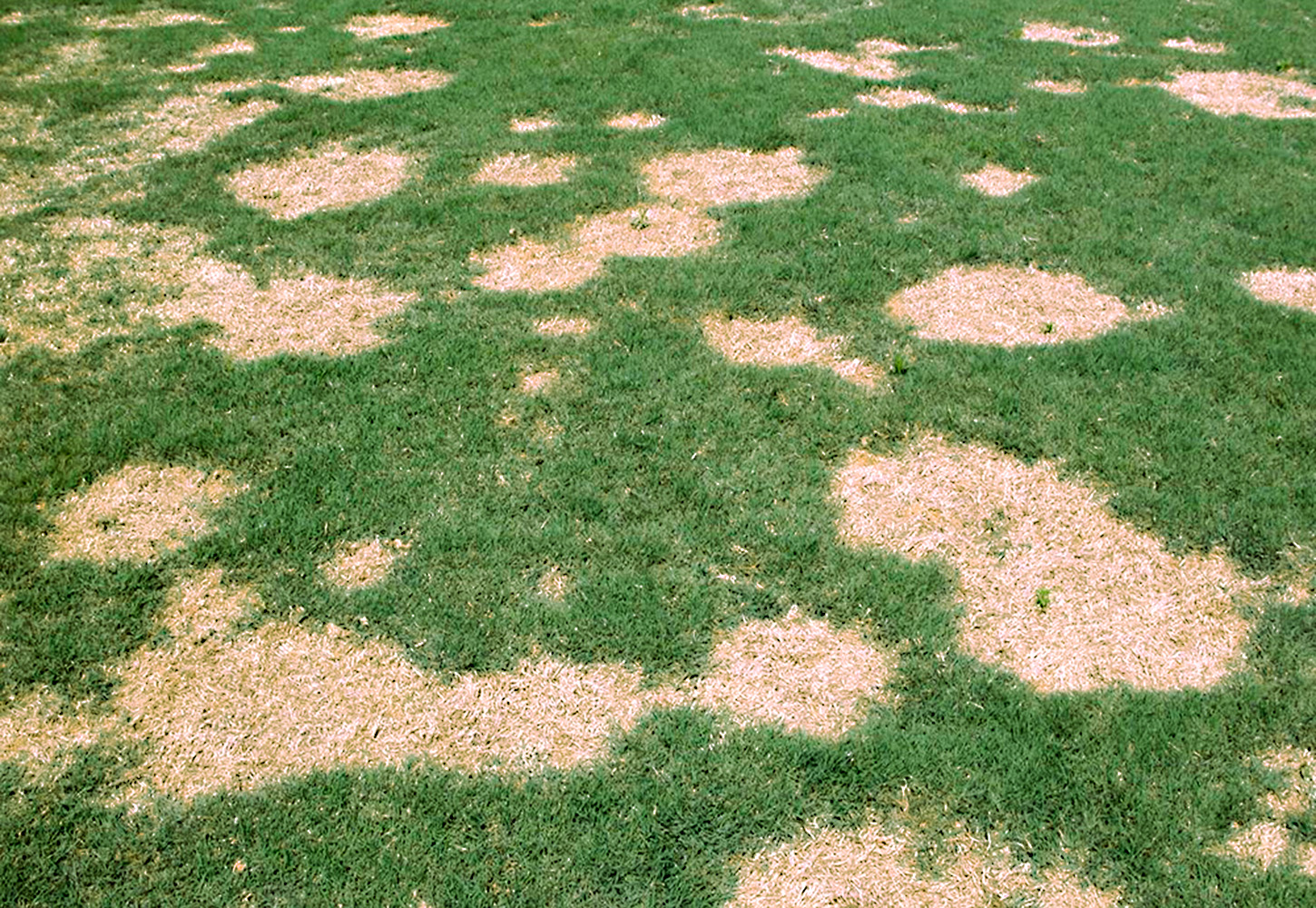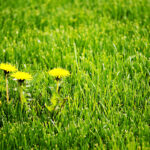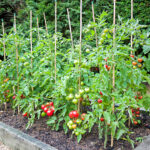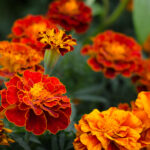
Varieties: Bermuda and Zoysia
Spring Dead Spot is a fungus that can be identified by the appearance of circular patches from 6 inches to several feet in diameter. These patches remain dormant as the turf greens up in the spring and eventually die and collapse to the soil surface. The roots, stolons and rhizomes are dark and rotten in affected areas. The fungus patches recur in the same spot each year and increase in size by up to several inches each season. Recovery is very slow, taking the entire growing season in severe situations
The Spring Dead Spot patches prevent the uniformity of a lawn and frequently they’re invaded by weeds. If left unmanaged, this fungus becomes more severe as the years pass.
It attacks the plant during the fall and winter and doesn’t directly kills it, but instead makes it more susceptible to freezing injury. As a result, Spring Dead Spot is most severe in the northern areas and usually after extremely cold winters.
Excessive nitrogen, potassium deficiencies, poor soil drainage, over-irrigation, excessive thatch accumulation, and soil compaction may encourage disease development.
How to control Spring Dead Spot:
- Feed your lawn but not overdo it with the nitrogen.
- Reduce thatch buildup and relieve soil compaction through aggressive aeration. Areas that are severely affected by the disease should be aereated at least three times per year, during the summer when the grass is most actively growing.
- Encourage the spread of the grass back into the affected patches.
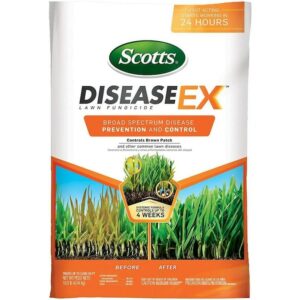
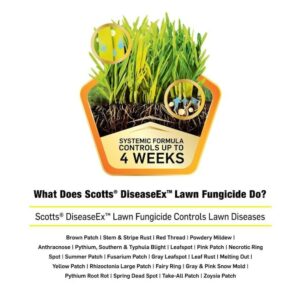
Scott’s MiracleGro Recomends
Scotts® DiseaseEx™ Lawn Fungicide offers a formula to cover a wide range of problem lawn diseases. This new product is fast acting and continues to control lawns diseases for up to 4 weeks.
Photos and content generously provided by The Lawn Institute

